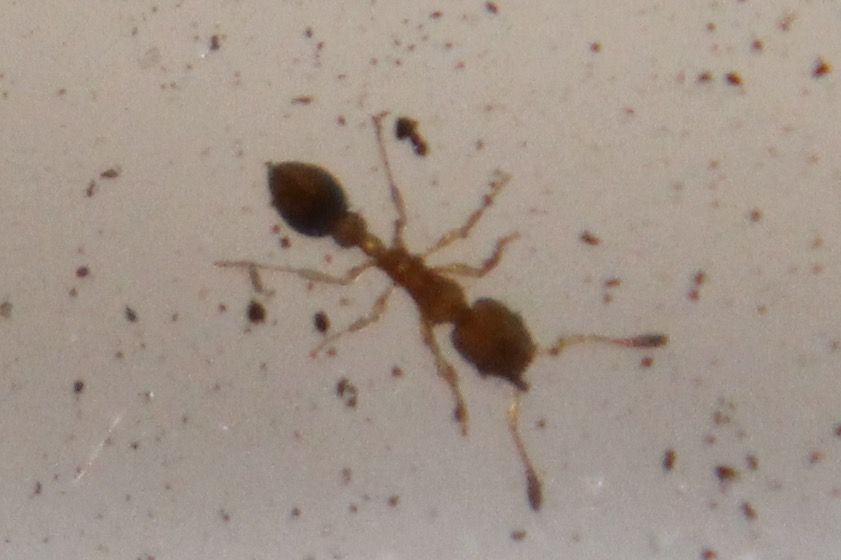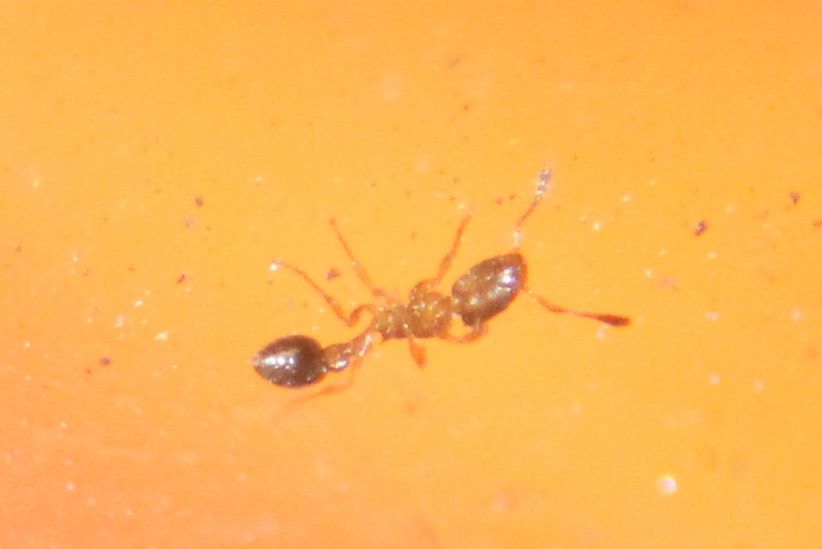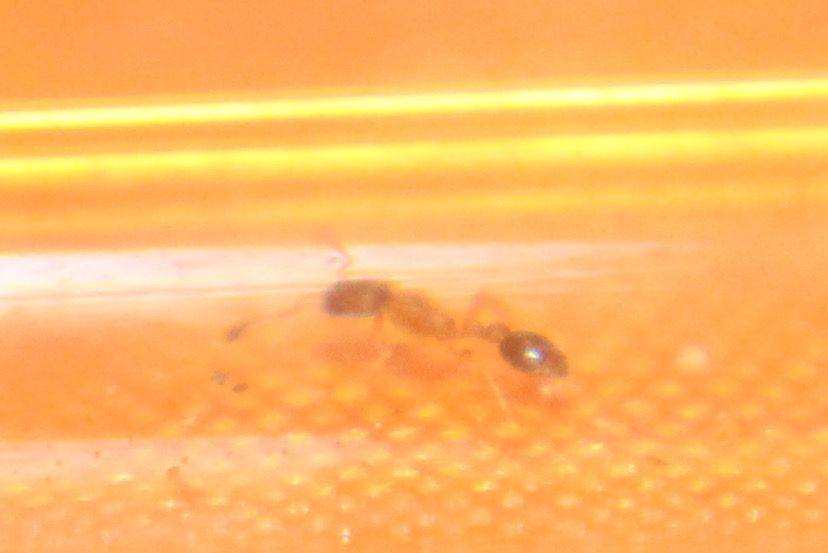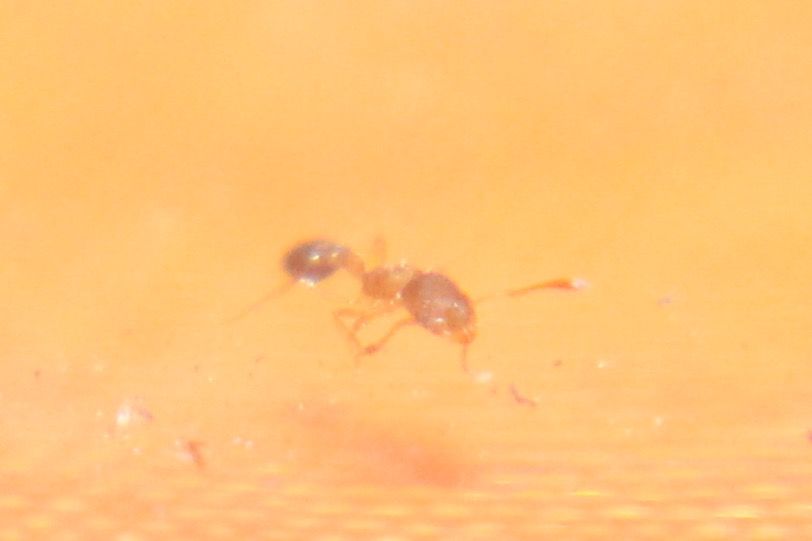I have been seeing these 2mm workers walking around near the nests of Pheidole bicarinata, but I am pretty sure they are not Pheidole. They move differently and the whole body shape and leg length looks different (in my opinion) from Pheidole. They have 2 nodes, their head length is greater than the width, and they are brown with a darker colored gaster. In one of the pictures, it looks like there is a stinger, but I am not sure.
(These pictures aren't great because it was really tiny and wouldn't stop moving.)
Any Ideas on the genus?






Edited by Aaron567, October 14 2016 - 4:48 PM.
















